Intel's Q4 2020 Earnings: PC Sales Boom, Fifth Consecutive Record Year
Intel prints more money
Intel reported its fourth quarter 2020 earnings today, marking a stronger-than-expected quarter and the fifth consecutive record-breaking year, largely propelled by sales of PC chips during the pandemic. Incoming CEO Pat Gelsinger and Omar Ishrak, Chairman of Intel's board, joined current CEO Bob Swan on the call and stated that the company has largely fixed the issues with its 7nm process node, which you can read about here, but will still outsource some manufacturing for its 2023 products.
Intel's earnings beat expectations as the company enjoyed record revenue for the fifth straight year. The company's client, data center, memory, and mobileye businesses all set revenue records.
Intel's Q4 net income weighed in at $5.86 billion, compared to its $6.91 billion last year. Revenue weighed in at $20 billion, down 1% year-over-year, but well above the company's $17.4 billion guidance. Despite the decline, Intel's performance beat its own estimates and the market consensus on the strength of its performance in its data center and PC businesses. Intel's full-year 2021 revenue weighed in at $77.9 billion, up 8% year over year.
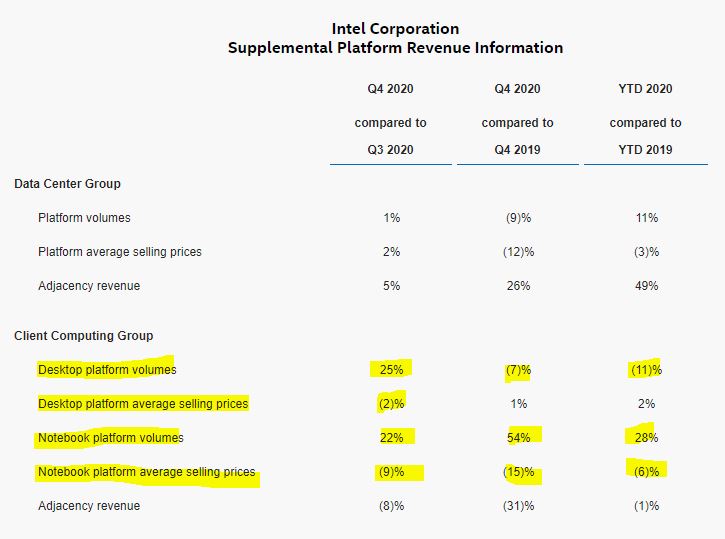

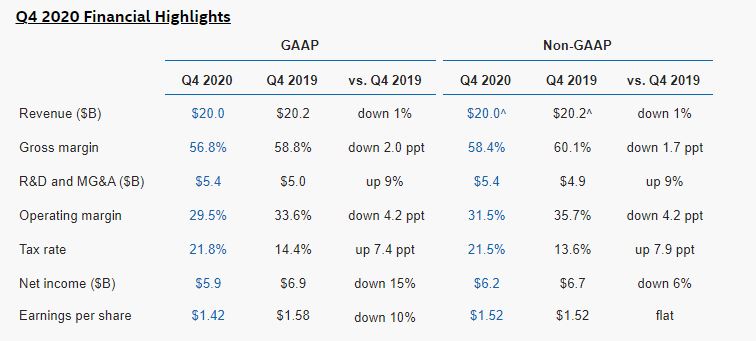
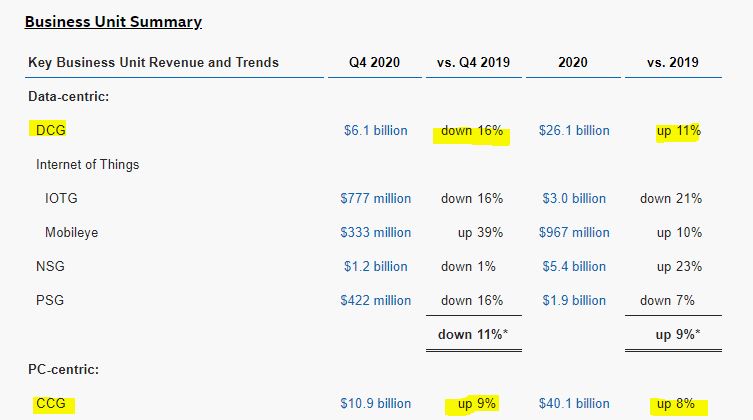
Intel's PC sales were powerful on the client computing side of the house, with the company selling 33% more PC chips than it did the year prior. The increased demand could stem from a combination of factors; the PC market is enjoying its fastest growth in the last decade, AMD has struggled to satisfy demand as it grapples with shortages of its market-leading Ryzen 5000 processors, which were particularly painful during the holiday season, and the shift to a work from home environment continues to accelerate demand. That equated to $40.1 billion in revenue for the year, an increase of $3 billion over 2019.
For the quarter, Intel's Client Computing Group (CCG) notched $10.9 billion in sales, up 9% year-over-year and easily beating the $9.6 billion market consensus. Intel's sales volumes of chips for desktop PCs increased 25% compared to the previous quarter, but declined 7% year-over-year, landing at a 10% decline for the full year. Intel's average selling prices also had a minor 2% quarterly drop, but gained 2% for the full year.
Most of that growth took place in the notebook segment, which enjoyed a 30% jump in revenue over the prior year. Quarterly notebook volumes were up 54% over the prior year and up 28% for the entire year, but average selling prices declined 15% on the quarter and 6% on the year. Intel also cited a heavier mix of lower-end products, like Chromebooks, as impacting average selling prices. Perhaps increased competition with AMD's Ryzen Mobile products took a toll, too, but we'll have to wait until next week for the market share update.
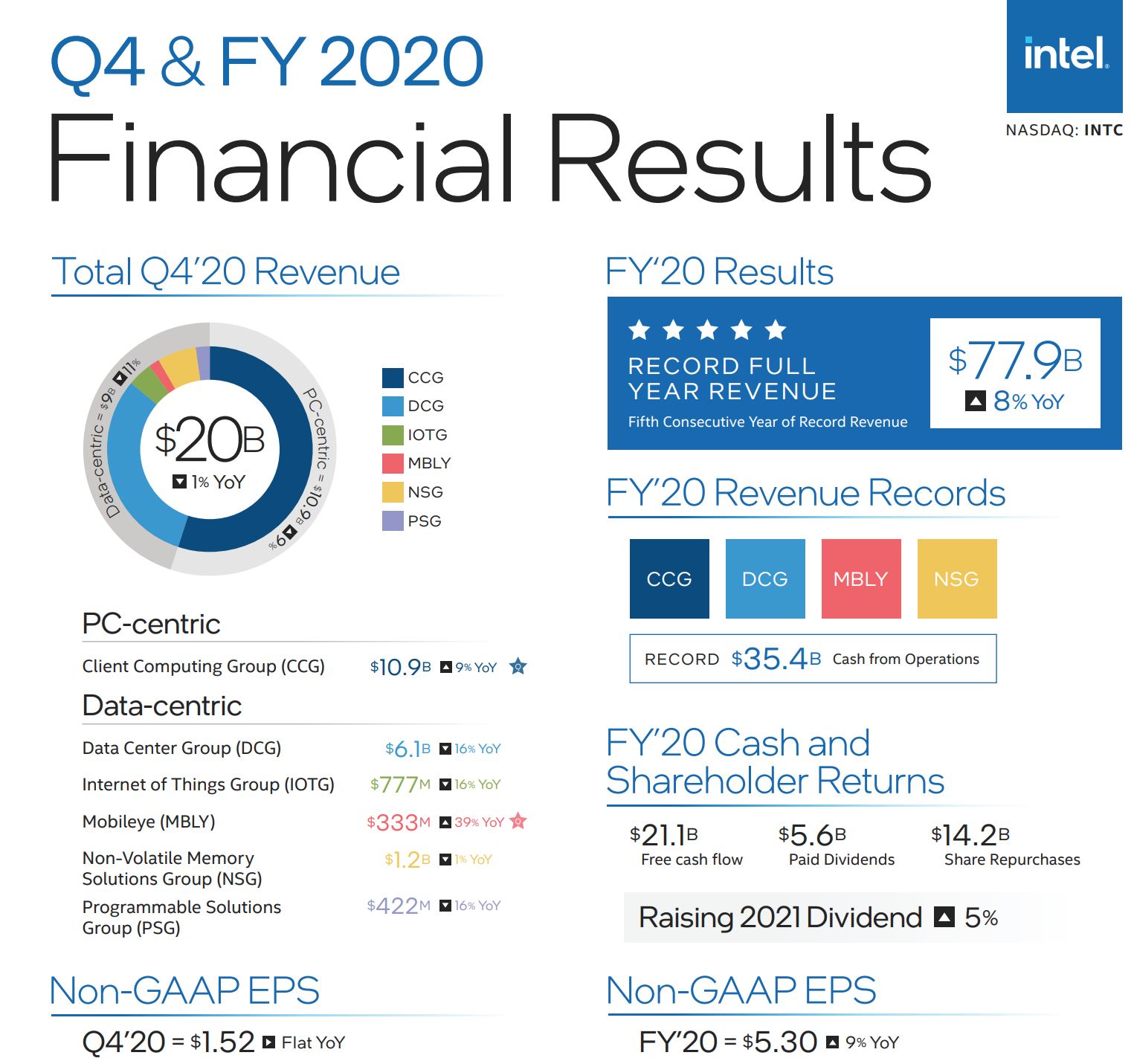
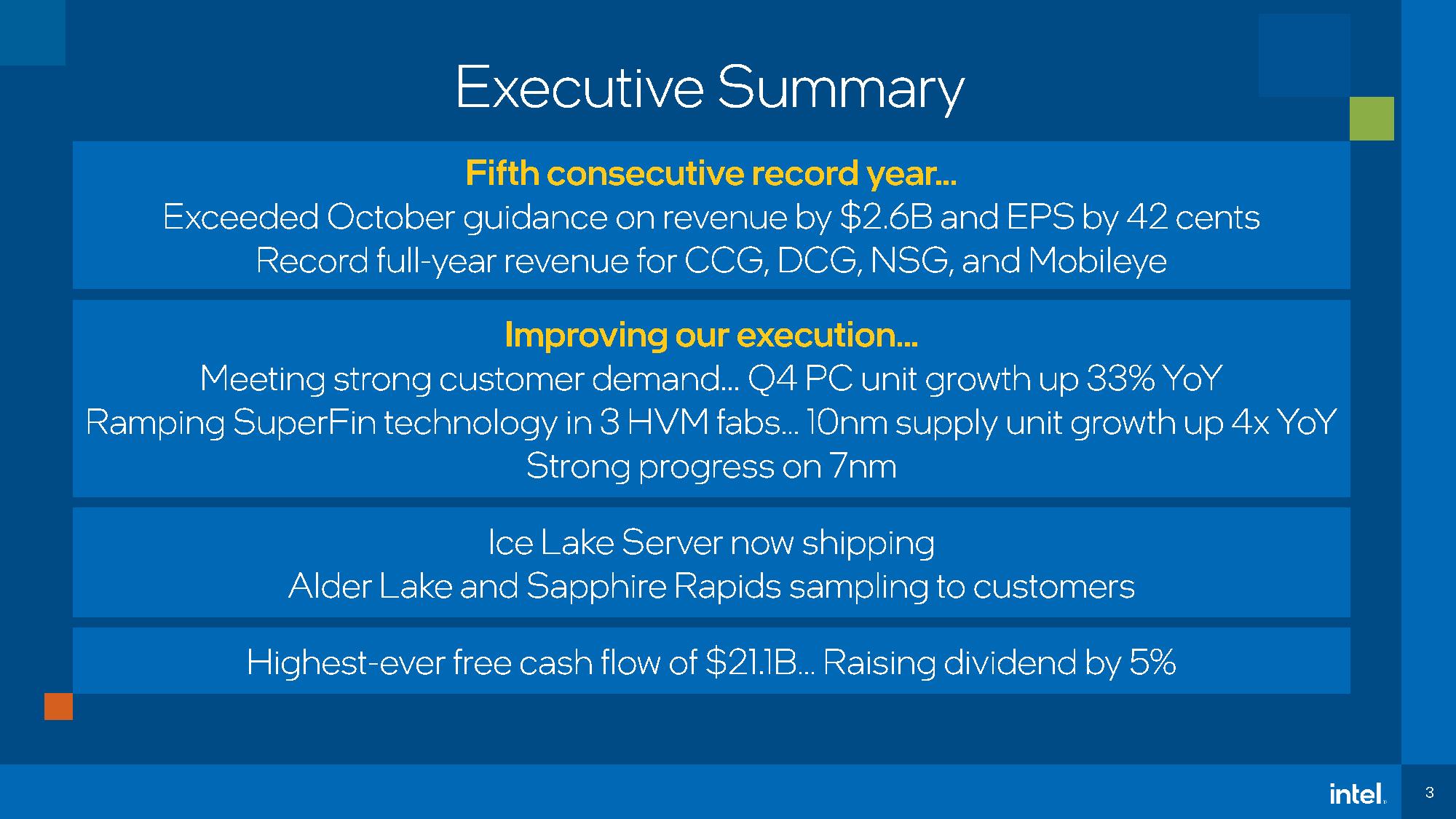
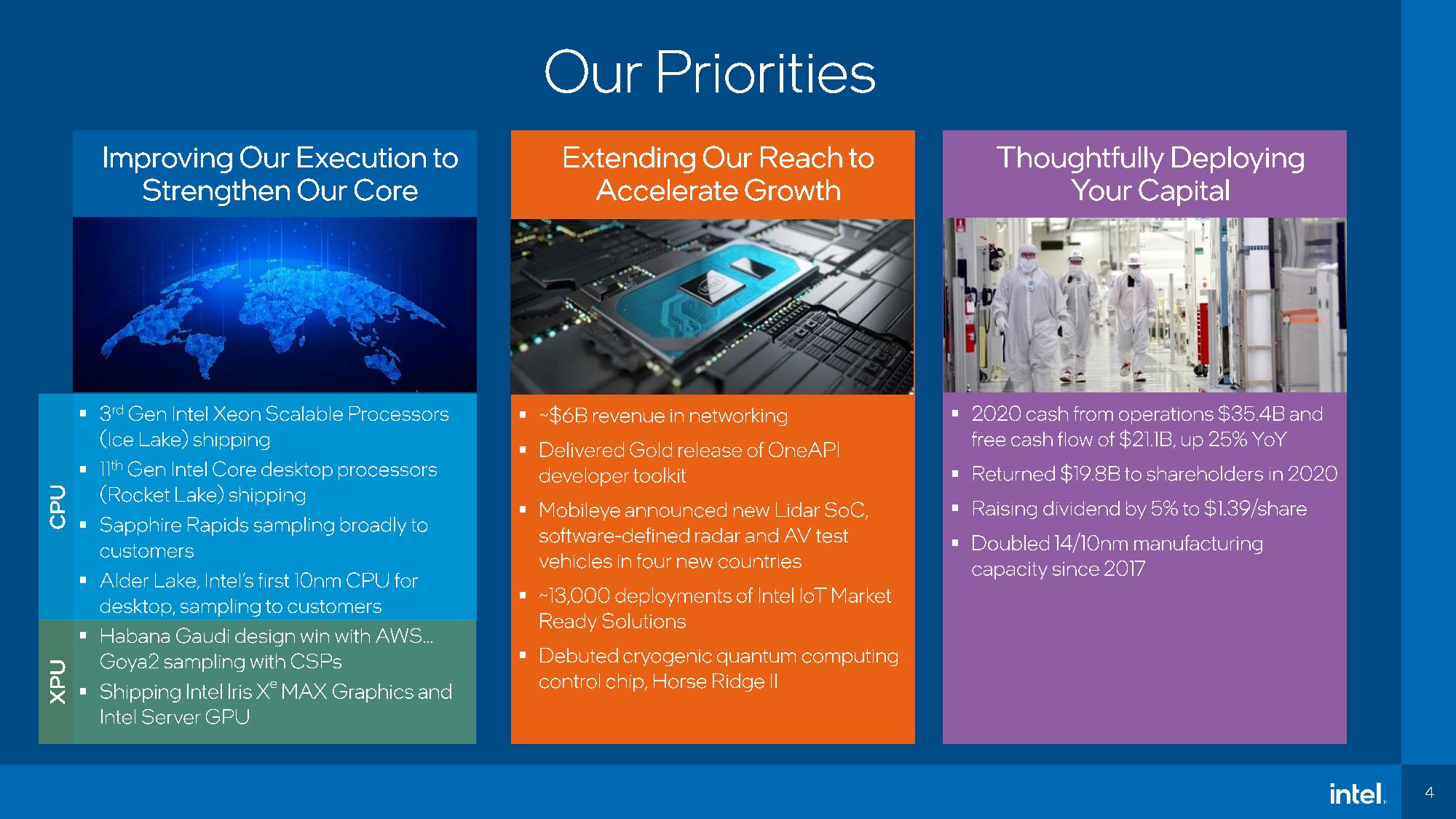
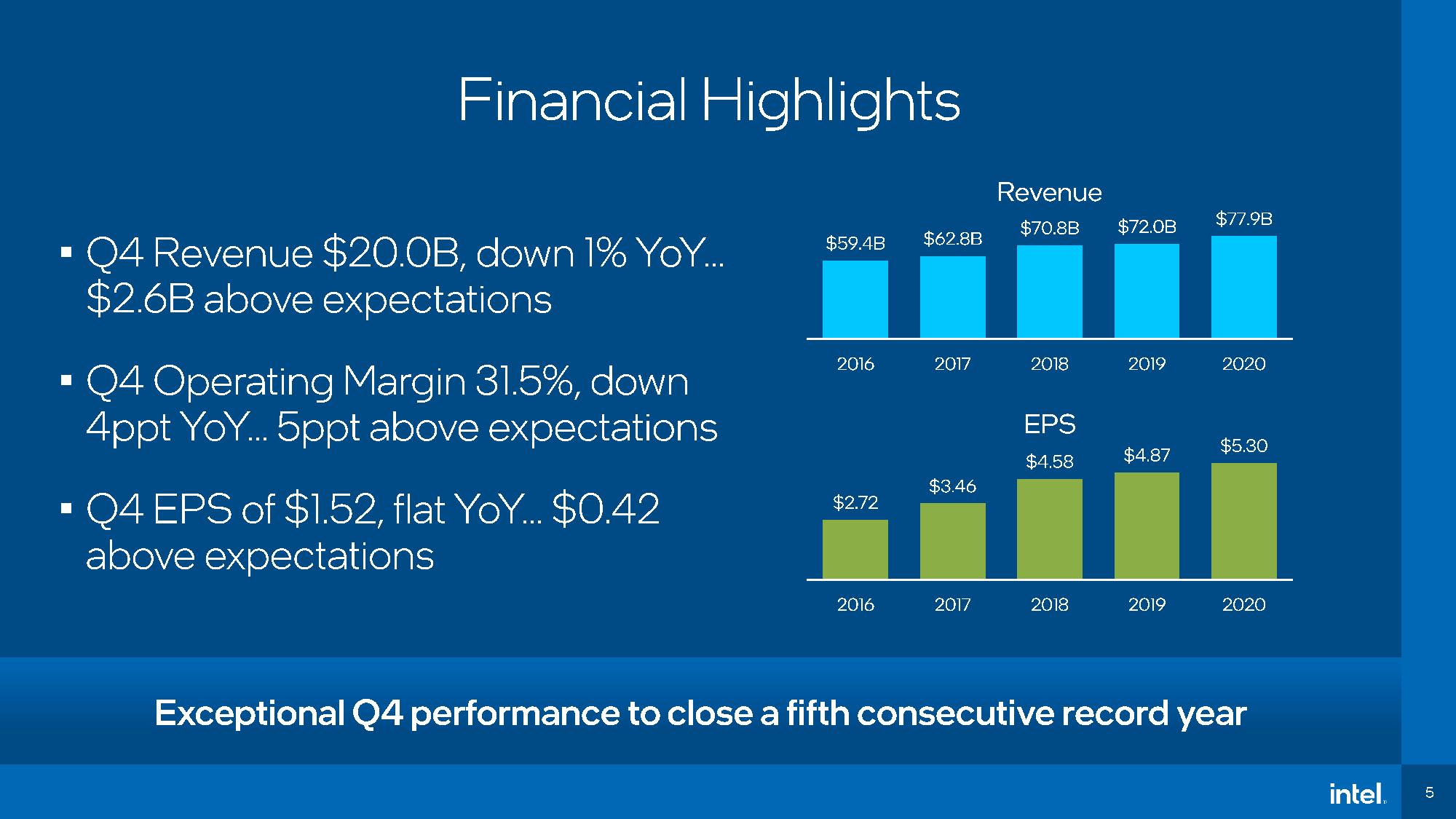


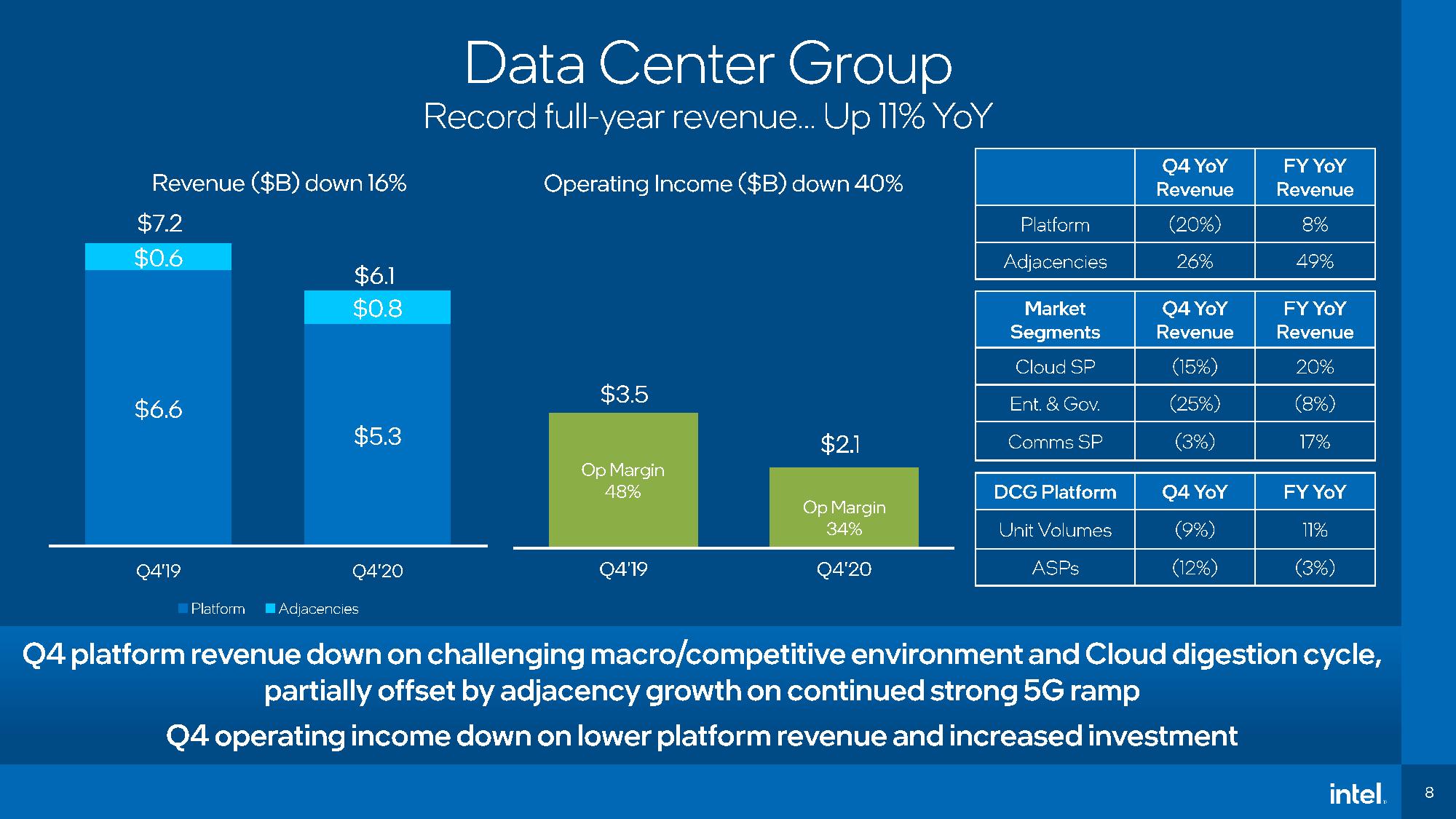
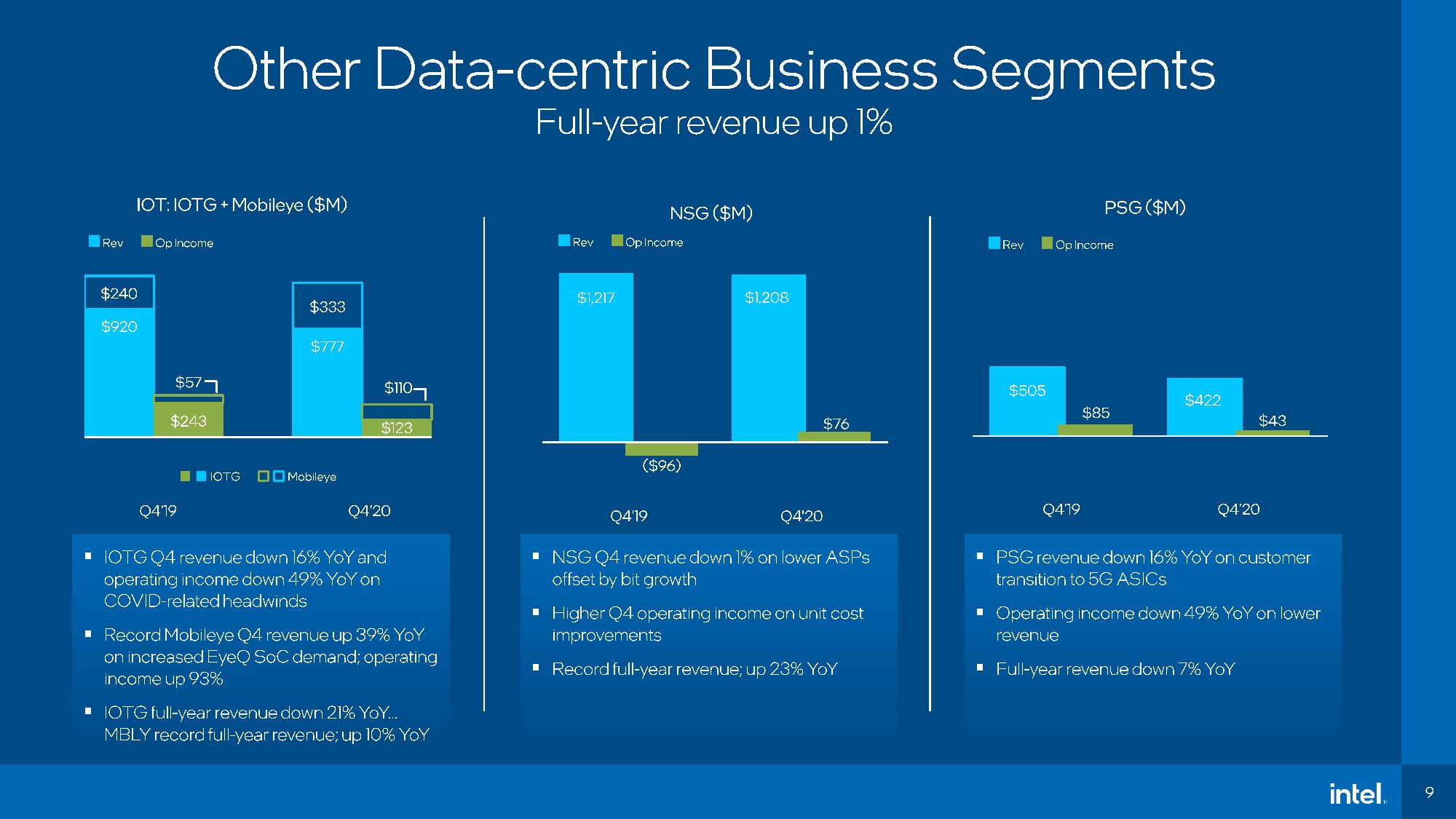
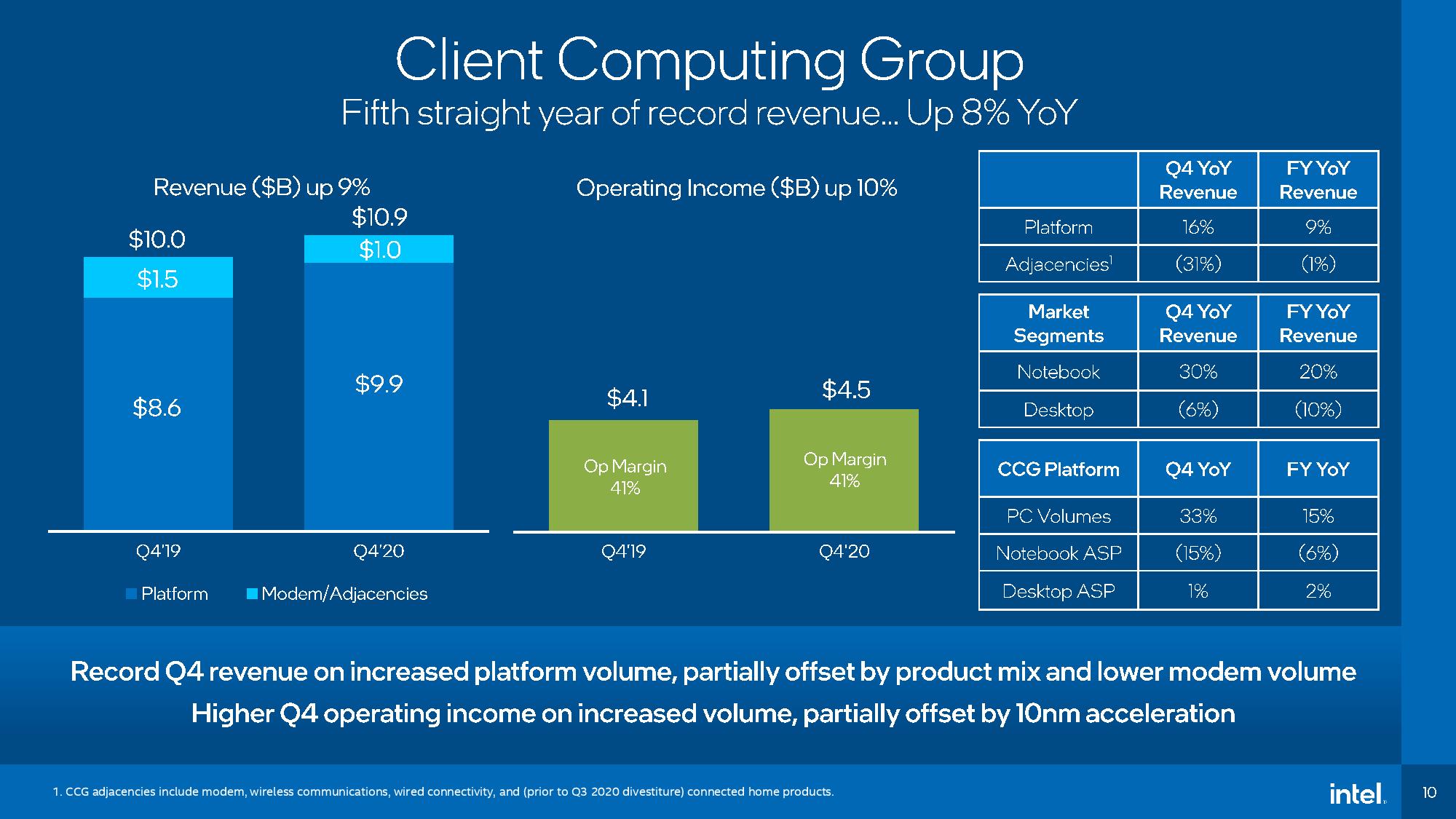

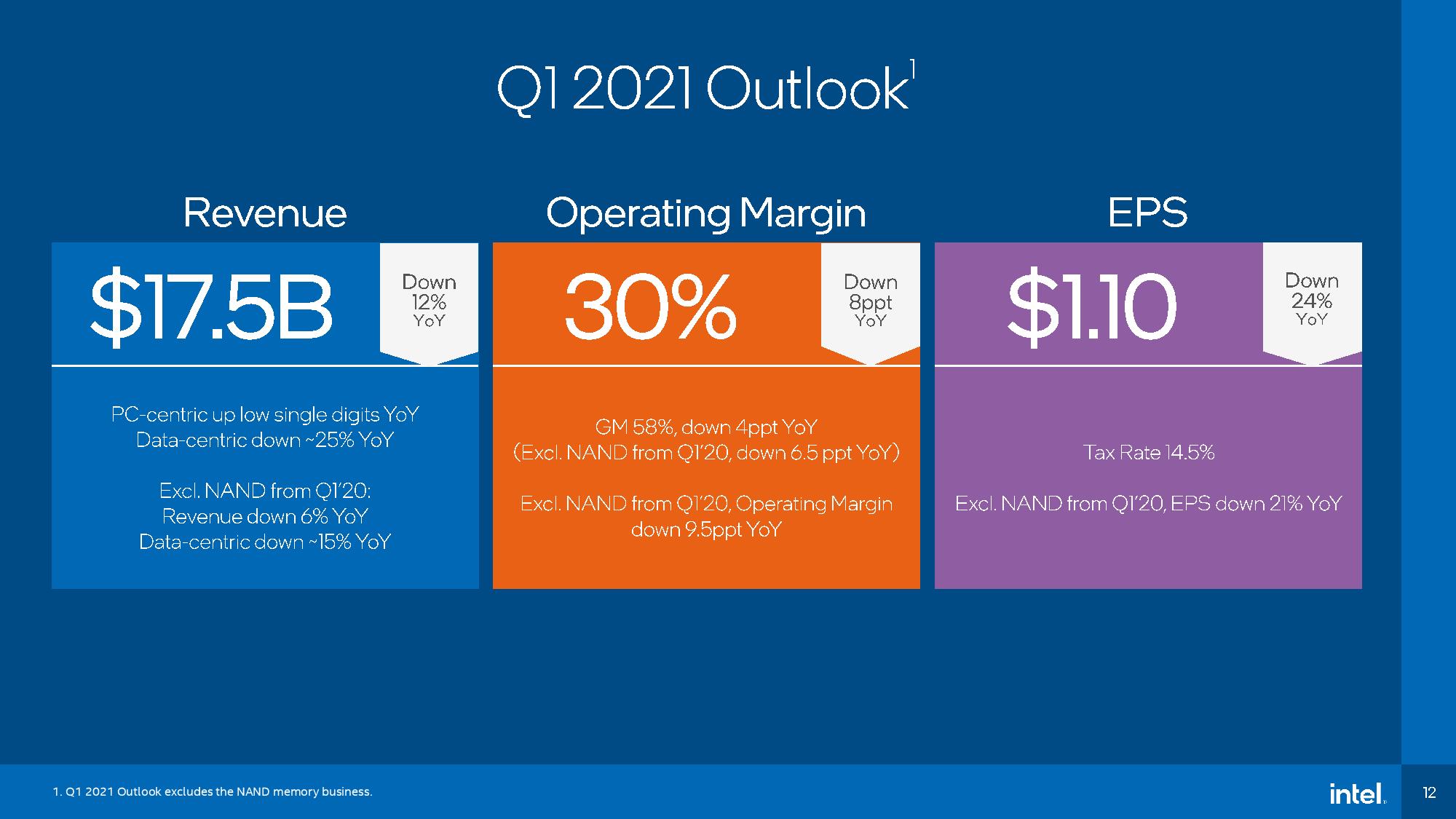
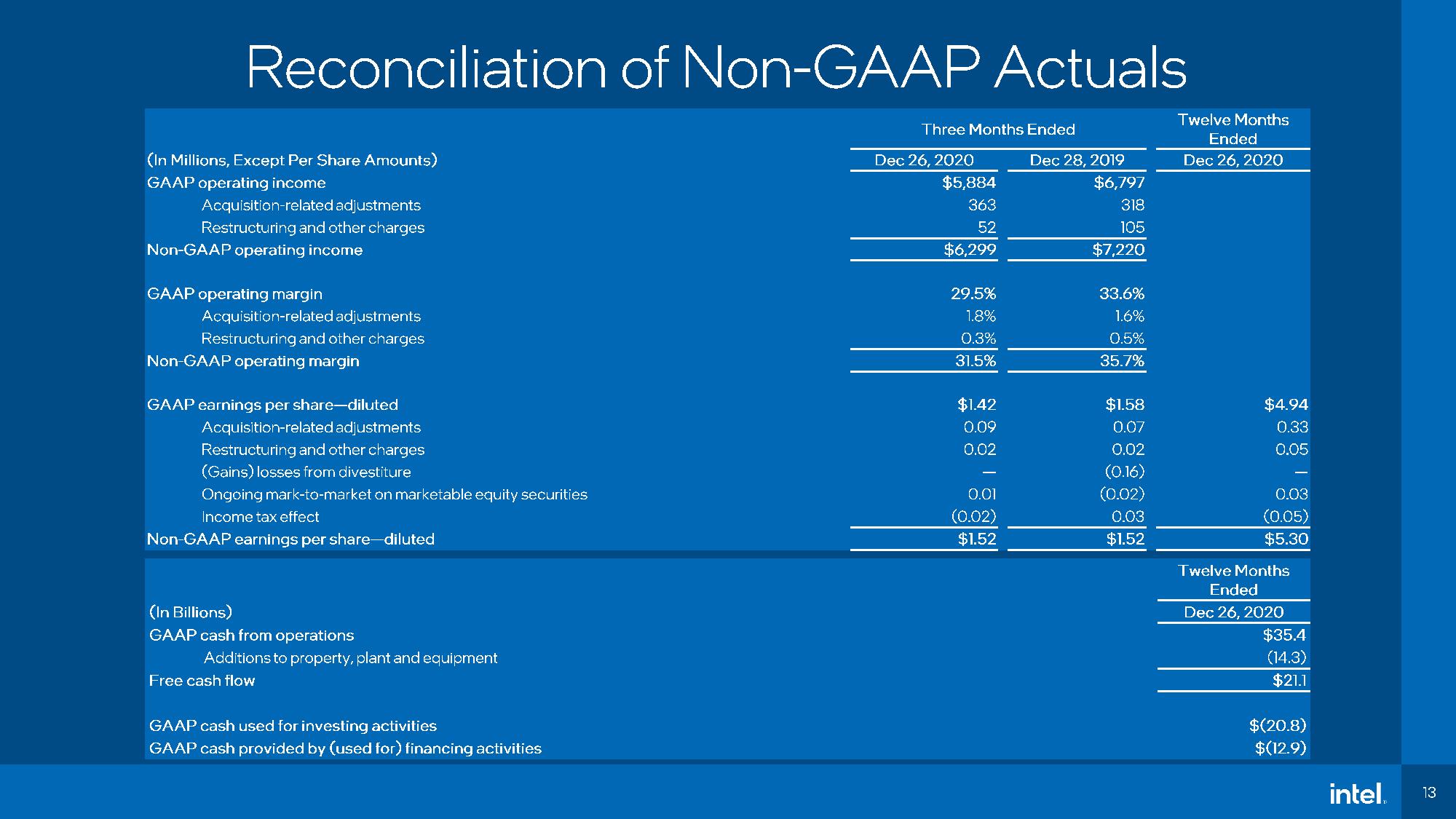
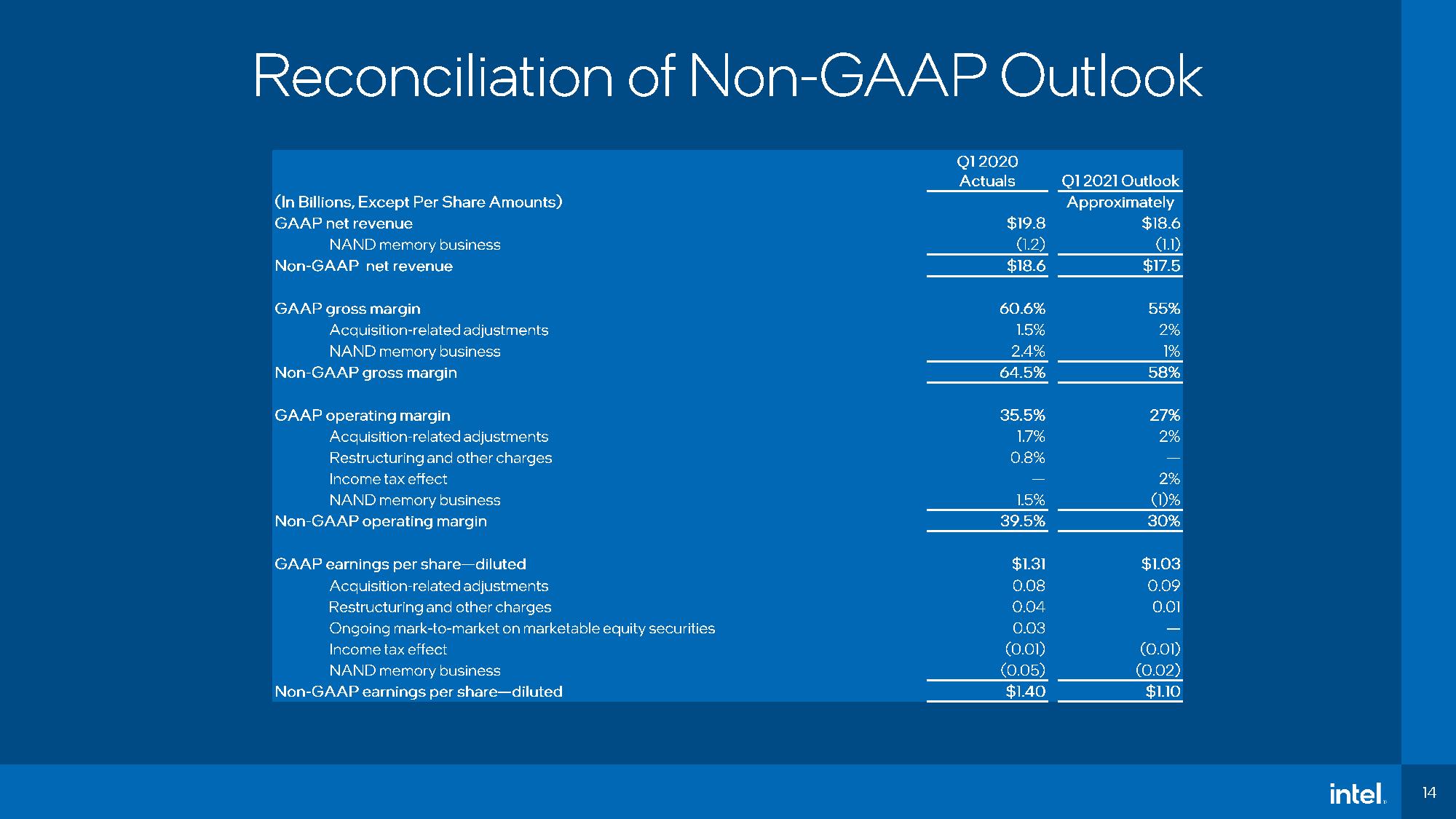
Intel had predicted its data center business to fall by 25% in the fourth quarter, but the Data Center Group (DCG) posted an 11% drop, which was better than estimates. The $6.1 billion in Q4 revenue easily beat the $5.4 billion consensus.
Stay On the Cutting Edge: Get the Tom's Hardware Newsletter
Get Tom's Hardware's best news and in-depth reviews, straight to your inbox.
However, Intel's DCG revenue fell to less than half that of its client side of the business, marking a step backward on its goal to relying less upon income from desktop PCs.
Intel's press release cites that its server platform revenue was down 16% in the quarter due to a challenging macro/competitive environment and cloud digestion cycle, but up 11% for the year. Intel is obviously becoming more price-competitive in the face of AMD's EPYC data center chips - its average selling prices dropped 12% compared to the prior quarter, and 3% for the entire year.
Much of the reduced average selling prices probably stem from Intel's more aggressive Xeon pricing in the face of competing AMD processors (Intel has nearly cut Xeon pricing by ~60% for its latest-gen chips). For now, it's hard to tell if the reduced revenue is due to pandemic- and trade war-induced factors, or the result of AMD chewing away more market share. We'll learn more next week.
These factors, among others, impacted the company's gross margins, which increased slightly quarter-over-quarter to 56.8%, but remain lower than the company's historical +60%. Likewise, Intel's full-year 2020 margins weighed in at 56%, down from 58.6% the year prior.
Intel's Q1 2021 guidance isn't nearly as impressive in terms of revenue - the company expects its data-centric business to be down by 25% year-over-year. Removing NAND from the equation brings the predictions for its server-centric buisness to -15%.

Paul Alcorn is the Managing Editor: News and Emerging Tech for Tom's Hardware US. He also writes news and reviews on CPUs, storage, and enterprise hardware.
-
JayNor "Quarterly notebook volumes were up 54% over the prior year"Reply
Intel didn't complain about constraints in the cc. -
Jim90 I wonder what %age of the "Desktop Platform" sales were pre-built gaming etc systems. Along with Laptops, Intel are still highly embedded out there and although AMD are doing extremely well in bringing back competition and choice, OEM Intel contracts will clearly be an issue for some time to come.Reply -
TerryLaze Reply
For AMD to get OEM contracts they will have to be able to guarantee a certain volume for each OEM way ahead of time so they can work out and get together all the supplies they need and AMD would have to do that at a good price.Jim90 said:OEM Intel contracts will clearly be an issue for some time to come.
With the Incredibly low supply AMD gets Intel is their least problem in getting OEM contracts.